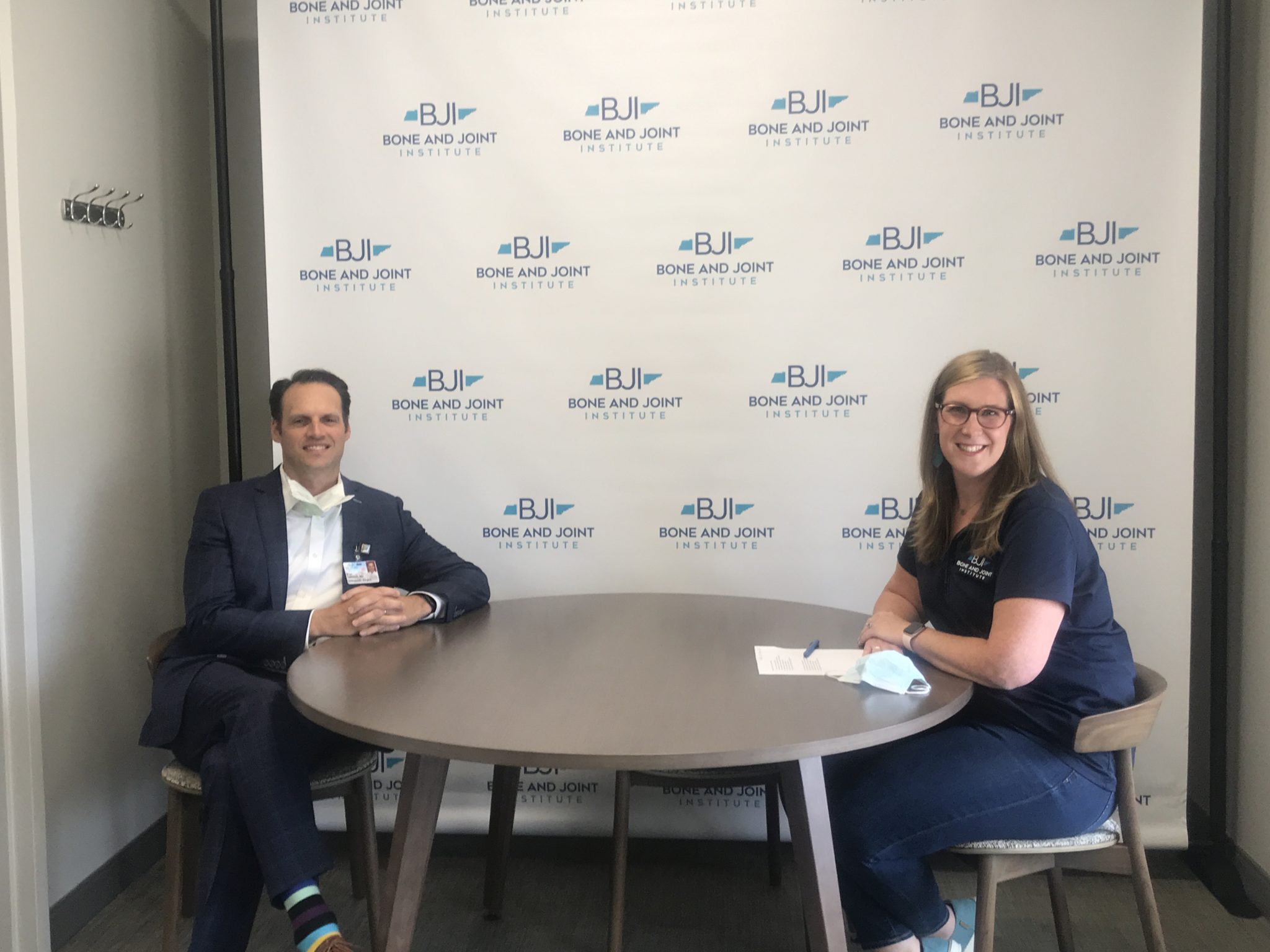Call Us: 615-791-2630

Today we will be talking about outpatient joint replacement. We recently sat down with Brian Perkinson, M.D. to discuss outpatient joint replacement at our ambulatory surgery center.
RECENTLY WE HAVE BEEN ABLE TO DO JOINT REPLACEMENTS IN OUR AMBULATORY SURGERY CENTER (ASC) DOWNSTAIRS IN OUR BUILDING. GIVE ME A LITTLE BIT OF INFORMATION ON PERFORMING JOINT REPLACEMENT IN AN ASC, BUT ALSO EXPLAIN THE SHIFT TOWARDS OUTPATIENT JOINT REPLACEMENT.
Dr. Perkinson: It is an exciting milestone for us at Bone and Joint Institute, which we have been working towards for a long time. I performed my first outpatient total joint replacement in 2015 and we have been slowly developing that program with our partners at Williamson Medical Centersince that time. People always ask, “How do you do outpatient joint replacement?” Well, it’s not exactly one singular thing – if you do this, everyone goes home. It’s an array of hundreds of little things that we do in your care, some that you might not even notice, that allows a patient to be able to go home the same day as having a hip or knee replacement. Our 40,000 square foot facility, a state-of-the-art ambulatory surgery center housed in our building, was developed with our partners at Williamson Medical Center. It has wonderful facilities, wonderful technology, beautiful operating rooms, beautiful pre-op and post-op nursing areas, and we have now transitioned our outpatient program to our downstairs facility. It is the same building where you come in and meet your surgeon, set up your surgery, and now you can come to that same building to have your surgery. You can come into the surgery center in the morning and go home the same day, just a couple of hours after surgery.
SPEAKING OF THE STATE-OF-THE-ART SURGERY CENTER DOWNSTAIRS, WHAT TECHNOLOGY DO YOU USE? DO YOU USE THE ROBOTICS THAT YOU WOULD YOU USE FOR A TRADITIONAL KNEE OR HIP REPLACEMENT?
Dr. Perkinson: Many ASCs are designed to be very cost-efficient, but they don’t always offer the same technology that a large hospital could offer. At the Bone and Joint Institute, we’ve spared no expense. Our doctors wanted to provide the highest level of care utilizing the best, most innovative technology. We use MAKOSmart Robotics for robotics-assisted surgery, the same robotic platform offered at Williamson Medical Center. We have navigation-assisted surgery which we use for our shoulder replacements, as well as anterior hip replacements with our specialized Hana table. All of the technology that we have in our hospital, we have in our ASC.
YOU MENTIONED HIP AND KNEE REPLACEMENT, WHAT OTHER TOTAL JOINT REPLACEMENTS CAN BE PERFORMED AT THE ASC IN AN OUTPATIENT SETTING?
Dr. Perkinson: My practice is primarily hip and knee replacement, but our surgeons at Bone and Joint Institute are doing outpatient joint replacements on virtually every joint in the body. We now have our spine surgeons doing one-level fusions of the neck. Our shoulder surgeons are doing total shoulder replacements. In addition, we have replacements on the wrist, hip, knee and ankle, and they can all be done in the outpatient setting on the right patient.
SPEAKING OF THE RIGHT PATIENT, WHAT CRITERIA DO YOU LOOK FOR TO DO AN OUTPATIENT JOINT REPLACEMENT, ESPECIALLY IN AN ASC?
Dr. Perkinson: There are pages and pages of medical criteria to determine who belongs in what setting. To get it down to the basics, you need to be a healthy patient. You need to be a motivated patient and you need to have home support. If you have those three things, you, in general, are a good candidate for an outpatient joint replacement.
WE HAVE MENTIONED, “PATIENT FIRST.” HOW DOES THIS IMPROVE THE WHOLE PATIENT EXPERIENCE?
Dr. Perkinson: Decades ago, a joint replacement patient might spend three to five nights in the hospital, two to three weeks in a skilled nursing facility or long-term care, and receive a lot of narcotic pain medicine. It’s completely different now. We do multi-modality pain approaches and we try our best to avoid narcotics. Our anesthesia partners, Dr. Katherine Dobie and Dr. Stephen Harvey, who work with us at our ASC, do an amazing job at what we call peripheral nerve anesthesia – nerve blocks and spinal anesthesia that block the pain pathways without the use of traditional anesthesia. This is extremely important in the recovery process, and our patients are able to wake up right away and feel normal. People go to sleep and then they wake up, they look around and say, “This is the room I left and this is the room I am back in. What just happened?” Then we come in and say, “You just had your hip replacement. We are going to get up and start walking.” They are really impressed. You can’t really compare the way that used to be done to that experience and patients just love it.
You can visit us at 3000 Edward Curd Lane in Franklin or on our website at www.BoneAndJointTN.org.
